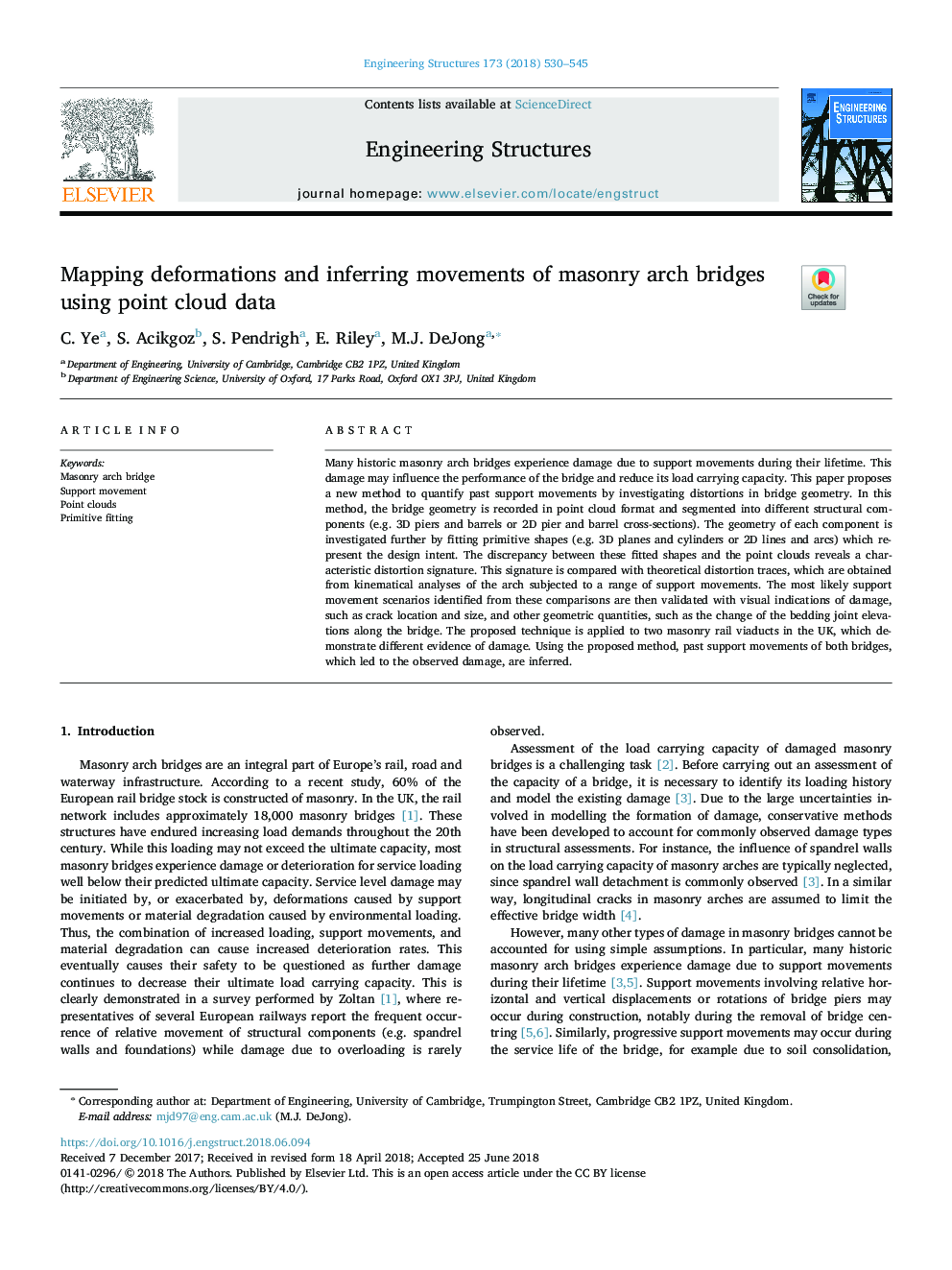| Article ID | Journal | Published Year | Pages | File Type |
|---|---|---|---|---|
| 6735620 | Engineering Structures | 2018 | 16 Pages |
Abstract
Many historic masonry arch bridges experience damage due to support movements during their lifetime. This damage may influence the performance of the bridge and reduce its load carrying capacity. This paper proposes a new method to quantify past support movements by investigating distortions in bridge geometry. In this method, the bridge geometry is recorded in point cloud format and segmented into different structural components (e.g. 3D piers and barrels or 2D pier and barrel cross-sections). The geometry of each component is investigated further by fitting primitive shapes (e.g. 3D planes and cylinders or 2D lines and arcs) which represent the design intent. The discrepancy between these fitted shapes and the point clouds reveals a characteristic distortion signature. This signature is compared with theoretical distortion traces, which are obtained from kinematical analyses of the arch subjected to a range of support movements. The most likely support movement scenarios identified from these comparisons are then validated with visual indications of damage, such as crack location and size, and other geometric quantities, such as the change of the bedding joint elevations along the bridge. The proposed technique is applied to two masonry rail viaducts in the UK, which demonstrate different evidence of damage. Using the proposed method, past support movements of both bridges, which led to the observed damage, are inferred.
Keywords
Related Topics
Physical Sciences and Engineering
Earth and Planetary Sciences
Geotechnical Engineering and Engineering Geology
Authors
C. Ye, S. Acikgoz, S. Pendrigh, E. Riley, M.J. DeJong,
